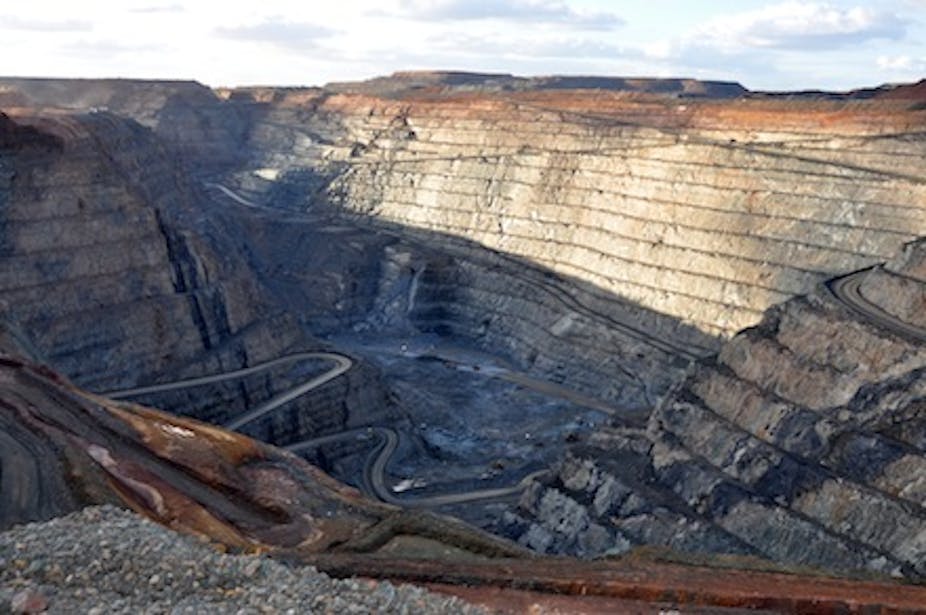Federal Labor’s mining profits tax was originally designed to be a redistributive measure from a very profitable section of capital to all of capital through company tax cuts.
The mini-me Mineral Resources Rent Tax (MRRT), which passed through the House of Representatives on Wednesday, has less income to do this (about $8 billion until 2015) and so the tax cuts are less. But this function is still the main driver for the MRRT – to redistribute profit from a handful of big miners to other companies.
On top of that, much of the rest of the revenue will be used to build infrastructure for the very companies paying the tax.
This redistribution within capital is one of the many measures – lengthening the working day, shifting wealth from labour to capital, slashing spending on public services also come to mind – aimed at providing some relief for stagnant profit rates.
What about superannuation, do I hear you ask?
The MRRT’s thwarted predecessor, the Resources Super Profit Tax (RSPT) came with a sweetener – the announcement that the super guarantee (SG) would increase from 9% to 12% percent over 2013 to 2019. This has been continued under the MRRT.
There will be a cost to the revenue as the measures are introduced and the SG increases. This is because of the concessional tax treatment superannuation receives. Treasury estimates the cost in 2013-14 to be $250 million and $500 million in 2014-15. Estimates put the revenue cost in 2020, when the full 12% is in place, at $3.6 billion.

The government is using the revenue from the MRRT to cover the lost revenue resulting from any SG increase. The money doesn’t actually fund the increase, just the revenue shortfall. This is the only linkage between the superannuation changes and the MRRT – a political one to help sell the MRRT to workers.
The SG is nominally paid by employers, but in practice it is paid for by workers in the form of lower wages.
These proposed increases will be part of any wages negotiations that occur over the period from 2013 to 2019 and it is likely there will be a wage-SG trade off. Certainly the ACTU agreed in the 1990s to forego a wage increase for a 3% SG increase. Former Treasury Secretary Ken Henry let the cat out of the bag recently when he said that SG falls on employees, not employers.
So too did Minister for Superannuation and ex-union leader Bill Shorten when he said: “Increasing superannuation is not a cost in terms of employers, because what happens is it is offset against real wage increases.” Straight from the horse’s mouth.
Workers will pay for the SG increases with lower wages – it is a pea and thimble trick.
The cost to the revenue of the superannuation concessions is staggering. The Treasury Tax Expenditures Statement 2010 estimates that we currently spend $27 billion on superannuation tax concessions.
It projects this will rise to almost $38 billion in 2013-14. By contrast, we spent just over $29 billion on the age pension in 2009-10 and this figure is estimated to rise to $38.5 billion in 2013-14.
Australian Council of Social Services figures show that about 80% of the concessions go to the well-off.
Maybe the time has come to revisit why we have a compulsory superannuation scheme at all and consider a fully funded adequate pension scheme funded by taxing the rich and business.
Counterbalancing the cost argument, the SG saves the government money in two ways. First it means it has to spend less on pensions over time. Second, because wages are rising at a lower rate, it means the indexation of increases for pensions is lower, because that indexation is based on wage increases.
It is a political sleight of hand to link the MRRT to the increase in SG.
There is an alternative. We should extend the MRRT to all resources, and to other industries that earn super profits because of their quasi-monopoly positions. The big four banks come to mind.
And instead of redistributing the tens of billions of revenue to capital, use it to improve public health, education and transport and really address climate change.
The money could be even used to address the gender pay gap in the community sector, pay Victorian nurses more and keep nurse/patient ratios and build government owned solar and wind farms.

